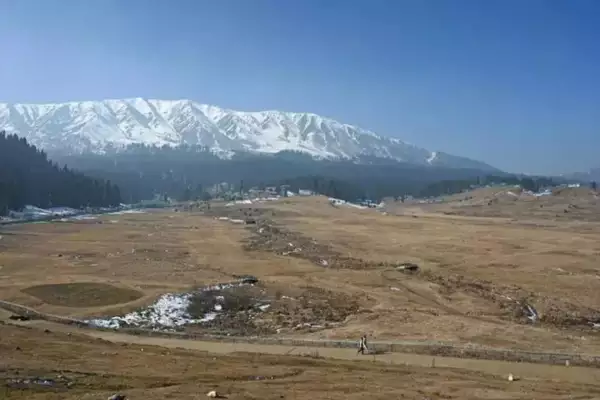Amidst Declining Snowfall in Kashmir, Gulmarg, renowned for its winter charm and vibrant ski resorts, is grappling with an unusual winter predicament – a severe shortage of snow.
Why Kashmir and Ladakh are without snow this winter?
Climatic Variations and Rainfall Deficit
- Jammu and Kashmir, along with Ladakh, have experienced an 80% rainfall deficit in December and 100% in January.
- Normally, these regions receive their first snowfall in early December, continuing through most of January, but this season has been unusually dry.
Decline in Western Disturbances
- Western Disturbances, originating beyond Afghanistan and Iran, are vital for winter precipitation in the Himalayan region.
- There has been a noticeable decline in these disturbances, leading to reduced precipitation during winter months.
Rising Temperatures
- A general increase in temperatures, more pronounced in higher elevations, has contributed to the reduction in snowfall.
- Temperature patterns in Kashmir this winter have occasionally mirrored or exceeded those in plains like Delhi.
El Niño Impact
- The persistence of El Niño, affecting global atmospheric circulation, may be contributing to the deficit precipitation.
- Although El Niño is a factor, other years without its presence have also experienced low snowfall, indicating broader climatic changes.
What are its Implications?
Tourism and Economic Impacts
- Significant decrease in tourist arrivals, especially in popular destinations like Gulmarg.
- Foreign and domestic tourists are cancelling or postponing visits, impacting local businesses and the economy.
- Houseboat owners in regions like Dal Lake face challenges due to the dry conditions.
Agricultural and Environmental Concerns
- Reduced snowfall affects winter crops, particularly horticulture, leading to lower yields of key crops like apples and saffron.
- Scanty snowfall implies little groundwater recharge, impacting drinking water supply and increasing the risk of forest fires and agricultural drought.
Long-term Ecological Effects
- Less snowfall contributes to the faster melting of glaciers and affects the generation of hydroelectricity.
- The overall environmental health of the region is at risk, necessitating adaptive and mitigative strategies to address these changes.
Ref: Source
| UPSC IAS Preparation Resources | |
| Current Affairs Analysis | Topperspedia |
| GS Shots | Simply Explained |
| Daily Flash Cards | Daily Quiz |



